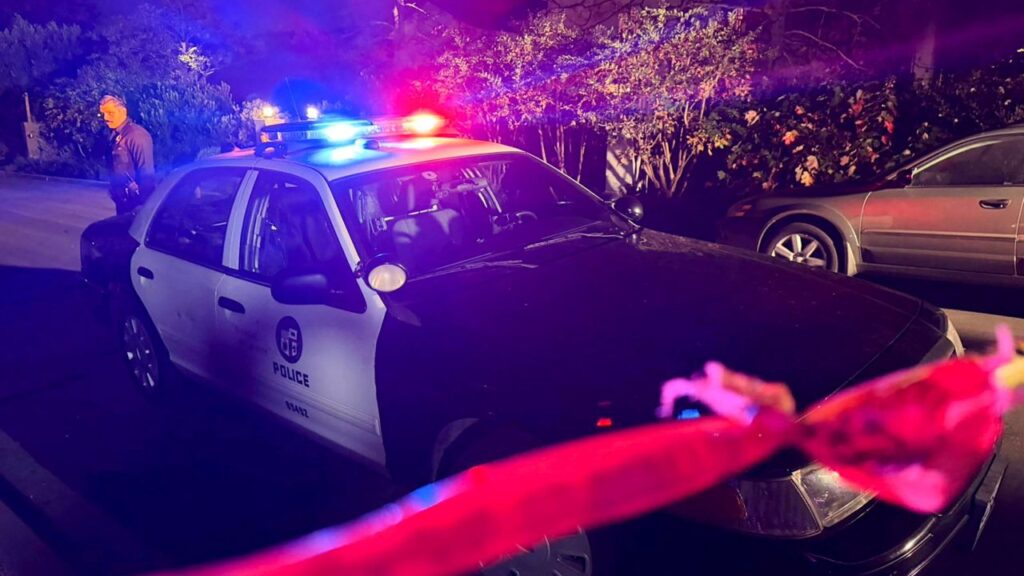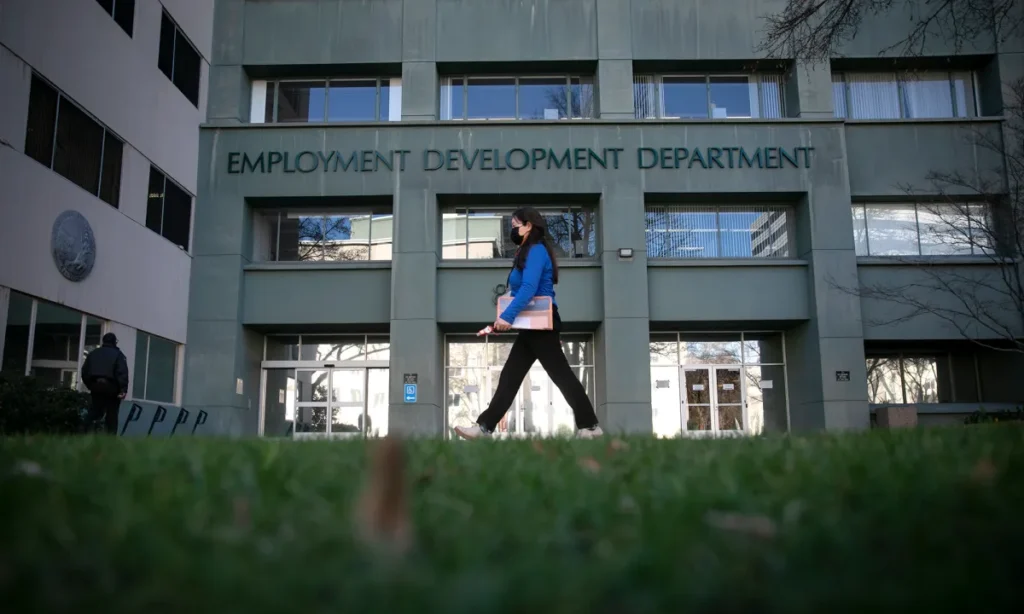Share
The state’s response to the water crisis that gripped tiny Teviston, California earlier this summer should have been a no brainer, according to Tulare County officials.
The rural central San Joaquin Valley county, with help from the state, had seen wells go dry en masse during the 2012-2016 drought leaving hundreds of families without water for months on end.
The county and state had seemingly worked out a game plan for that disaster and Tulare County had even regrouped its local drought task force earlier this spring as it saw this summer shaping up to be especially dry.
So, county officials and Teviston residents were more than a little frustrated by what they said was the state’s flat-footed response when Teviston’s well broke down June 9, leaving the town dry, as a brutal heat wave swept over the state.
At almost every turn, the state was more a hindrance than a help, said Denise England, Tulare County’s Water Resources Director.
According to England: Money to pay for large-scale emergency water was stuck in the bureaucratic pipeline. Arbitrary boundaries set by the state Division of Drinking Water forced haulers to drive an extra 40 miles a day trucking in water when closer sources were available. Drinking Water regulators balked at getting families water for swamp coolers, even as forecasts showed an extended period of days above 110 degrees.
Worst of all, England added, a family had to get their medically fragile child’s Stanford University doctor to plead for a 2,500-gallon tank after spending two weeks scrounging for water from friends’ houses.
“Check your notes from the last time,” said an exasperated England. “Or just get the money out to the counties. We can’t wait around.”
Mounting Frustration, Looming Disaster
The problem is a near legendary level of bureaucracy at the state Water Resources Control Board, which oversees the Division of Drinking Water, said Scott Taylor, director of the Lamont Public Utilities District in Kern County who sympathizes with England’s situation and her frustration.
“It’s paralysis by analysis,” he said of the inertia he’s seen from the state Water Board. “It takes an act of Congress to get them to do anything.” The Lamont PUD has been working for eight years to consolidate a smaller system with contaminated water into its larger system.

“I sometimes find it so unfair that this falls in our court. To me, I’ve always felt like this falls on the state. This fall also on our local groundwater agencies.”
— Leslie Martinez, Community Engagement Specialist
Community activist groups are similarly frustrated by what they see as a lackadaisical state attitude toward mostly Latino, disadvantaged communities in the central San Joaquin Valley.
“No one is prepared,” said Leslie Martinez, community engagement specialist for advocacy nonprofit Leadership Counsel for Justice and Accountability. “I sometimes find it so unfair that this falls in our court. To me, I’ve always felt like this falls on the state. This falls also on our local groundwater agencies.”
The Pixley Irrigation District Groundwater Sustainability Agency, which covers the Teviston area and, reported a monitoring well withinin the drinking water district had dropped 48.9 feet between spring and fall of 2020. Groundwater levels fluctuate significantly depending on the season and how much rain and snow the state receives. But the Pixley GSA notes in its report to the state Department of Water Resources that the Teviston water level failed to meet objectives required by the state’s new groundwater law.
Those experiences don’t bode well for local and state authorities’ ability to deal with what some researchers have said could be a wave of dry domestic wells as groundwater levels drop due to drought. The Public Policy Institute of California predicted earlier this summer that up to 2,700 domestic wells could go dry this year in the Central Valley if groundwater levels drop at the same rate as the previous drought.
Paperwork First
One state official who said the state responded well to Teviston acknowledges that appropriate agreements had to be worked out in order to get water to residents.
The state Water Board had an existing contract with Visalia-based nonprofit Self-Help Enterprises to provide water to homes that were on private wells, explained Joe Karkoski, deputy director of the Division of Financial Assistance at the state Water Board.
But Teviston homes get water from a community-wide system, which wasn’t covered under the state’s agreement with Self-Help Enterprises. Self-Help works with residents on housing and water needs.
The “nuances of the particular funding agreement” with Self-Help Enterprises were specific to private well users, Karkoski said, and had to be adapted to hauling water for an entire system, creating a “whole new level of costs and logistical challenges.”
“We actually acted pretty quickly in terms of giving approval to Self-Help to use the funding for a public water system,” said Karkoski, who insists the state is making access to water a priority and will provide more if a household doesn’t have enough.
Frantic for Water
It’s true that the state did respond after Teviston resident Esperanza Guerrero had her child’s Stanford doctor intervene on June 25.
Until then, however, it was up to the Guerrero family to find its own water after the town’s well failed on June 9. Their home is farther away from storage tanks where water was being delivered so their lines didn’t get even a dribble.
The family was frantic for water. They bought water from the store and Guerrero’s husband filled jugs from friends’ houses. Desperate, Esperanza went to her daughter’s doctor for help. Guerrero’s 16-year old daughter has an intestinal condition that causes frequent vomiting and diarrhea.
“It was extremely stressful to be in my home without water. Without water, you can’t do anything.”
— Esperanza Guerrero, Teviston resident
The 30 gallons of drinking water being delivered every two weeks through the county’s bottled water program, simply wasn’t enough. (That amount works out to about a half gallon per person, per day for a family of four.)
Once the doctor called Self-Help and the information was relayed to the state, a 2,500-gallon tank was approved by the state Division of Financial Assistance for the Guerreros’ home on June 25.
“It was extremely stressful to be in my home without water,” said Guerrero in Spanish through an interpreter. “Without water, you can’t do anything.”
Guerrero said she felt lucky to have the tank, but that other families, some with eight or 10 people, had to choose between buying food or extra bottled water to meet their own needs.
Other Teviston families who heard how Guerrero got her tank had their doctors call and send letters to the county for tanks, even though the county had no authority to approve them, England said. That was up to the state Water Board’s Division of Financial Assistance. But without a good outreach plan, families didn’t know where to turn.
Plans Need Money
The Guerreros and other Teviston families should not have had to go through that, Tulare County’s England said.
The state should have been prepared to fund a comprehensive response, she added.
After wells went dry by the hundreds in Tulare County during the 2012-2016 drought, England brought together a host of groups including: the county’s Office of Emergency Services; Environmental Health Department; Resources Management Agency; Health and Human Services; and representatives from Self-Help Enterprises, California Sequoia Community Corps, United Way, Community Water Center, Leadership Counsel for Justice and Accountability and the State Water Board’s Division of Financial Assistance and Division of Drinking Water.
Together, they worked out a list of action plans. But, England noted, those plans — getting large amounts of water into communities, storing and distributing it — require money. And it all has to happen quickly. When Teviston’s well broke down and Tulare County called on the state for help, she said, state officials were more interested in how Teviston would solve its water problems in the longer term.
England said members of the task force had to tell the state, “You can’t leave people out of water while you build the long term solution.”
Adding to England’s frustration is the fact that the state appears to have money to adequately fund emergency responses.

“Right now, we’re kind of in a holding patter, like we all know what we would like to do. But the resources aren’t there yet.”
— Denise England, Tulare County’s Water Resources Director
In 2014, voters passed Proposition 1, which included $520 million for safe drinking water with a focus on disadvantaged communities. In 2019, the Safe and Affordable Funding for Equity and Resilience (SAFER) fund was created to provide $130 million a year to fix water systems in disadvantaged communities. On July 12, Gov. Newsom signed a budget bill that will add $1.3 billion more for drinking water infrastructure also with a focus on disadvantaged communities.
So far this year, the county has received a $950,000 grant from the state Water Board in February for bottled water deliveries across the county. If more funding were available, England said, the task force could coordinate with different agencies to provide income assistance and help with air conditioning problems and food shortages in small communities impacted by the drought.
“Right now, we’re kind of in a holding pattern, like we all know what we would like to do,” England said. “But the resources aren’t there yet.”
Meanwhile, she said, the state Water Board’s focus seems to be on long-term solutions to failing water systems, such as drilling new wells or consolidating small water systems with larger, more capable ones.
Yes, long-term fixes would be great, England said, but when families need water immediately, that has to be the priority. Besides, she added, the state has had five years since the last drought for long-term fixes, and nothing much has changed.
“Teviston was a problem in 2014; why is it still a problem in 2021?” she asked.
Forgotten Families
Teviston has a long history as a forgotten, neglected community. Its struggle for clean drinking water has been an ongoing thread in its story.
The town was founded by a wave of “Black Okies” who came to California in the 1930s and ‘40s seeking a better life, according to articles by Fresno author Mark Arax. Redlined out of existing towns, many started their own communities throughout the central San Joaquin Valley. They lived in abandoned boxcars and small houses built from scrap lumber; indoor plumbing was a luxury the poor residents couldn’t afford. So, Teviston families spent years hauling water in jugs and old oil drums from Pixley or Earlimart.
Then in 1959, residents formed their own water district, floated a $7,800 bond and dug a well. A pump, sold to the then 300-person town for half price and installed for free, went online in late December that year. It was described as “the gift,” in a Time magazine article.
Over the years, the town has changed. Black families have been replaced by mostly Latino families, but access to drinking water remains a stubborn problem.
The town’s water issues are, indeed, well known to state water regulators. In 2012, the state granted Teviston $10,000 to fix a well malfunction. And in 2017, when the community’s well collapsed, the state provided more than $400,000 for bottled water and a new well. The Teviston Community Services District is seeking more state funding to drill another, back up well.
Meanwhile, the broken well was brought back online July 16, something resident Esperanza Guerrero was dreading because it would mean removal of the water tank at her home.
“I don’t have any confidence in the repair or the well,” she said.
At least with the water tank, Guerrero knew her daughter would have the water she needs. She hoped the county or state would take notice this time and do something to make sure her child and the other Teviston families aren’t put in this kind of danger again.
“Community members in Teviston — we’re poor; we’re low income; we need assistance,” she said. “We feel like we have been forgotten.”
SJV Water is an independent, nonprofit news site dedicated to covering water in the San Joaquin Valley. This story was produced with funding and support from Fresnoland, for the Fresno Bee.
RELATED TOPICS:
Categories

Bondi Beach Is What ‘Globalize the Intifada’ Looks Like

What We Know About Rob Reiner and His Death


















